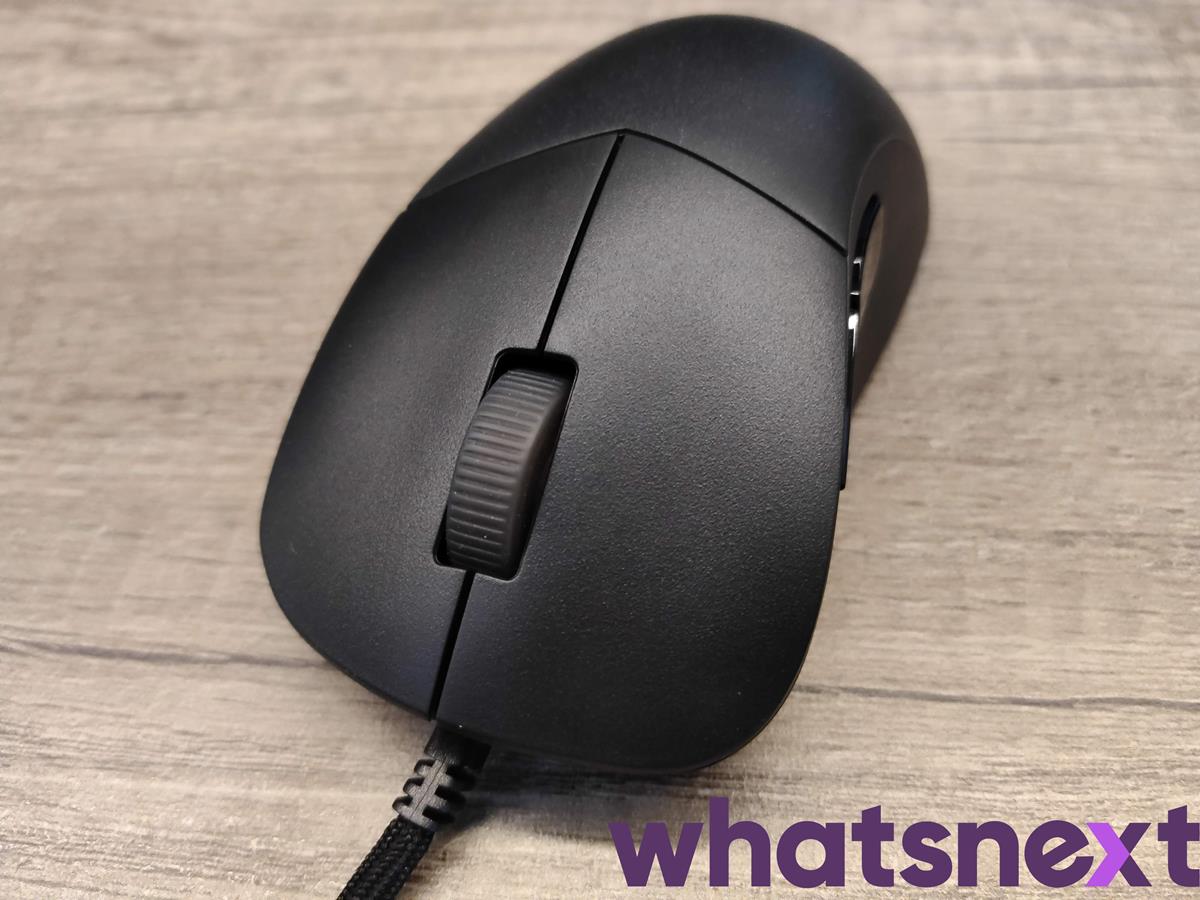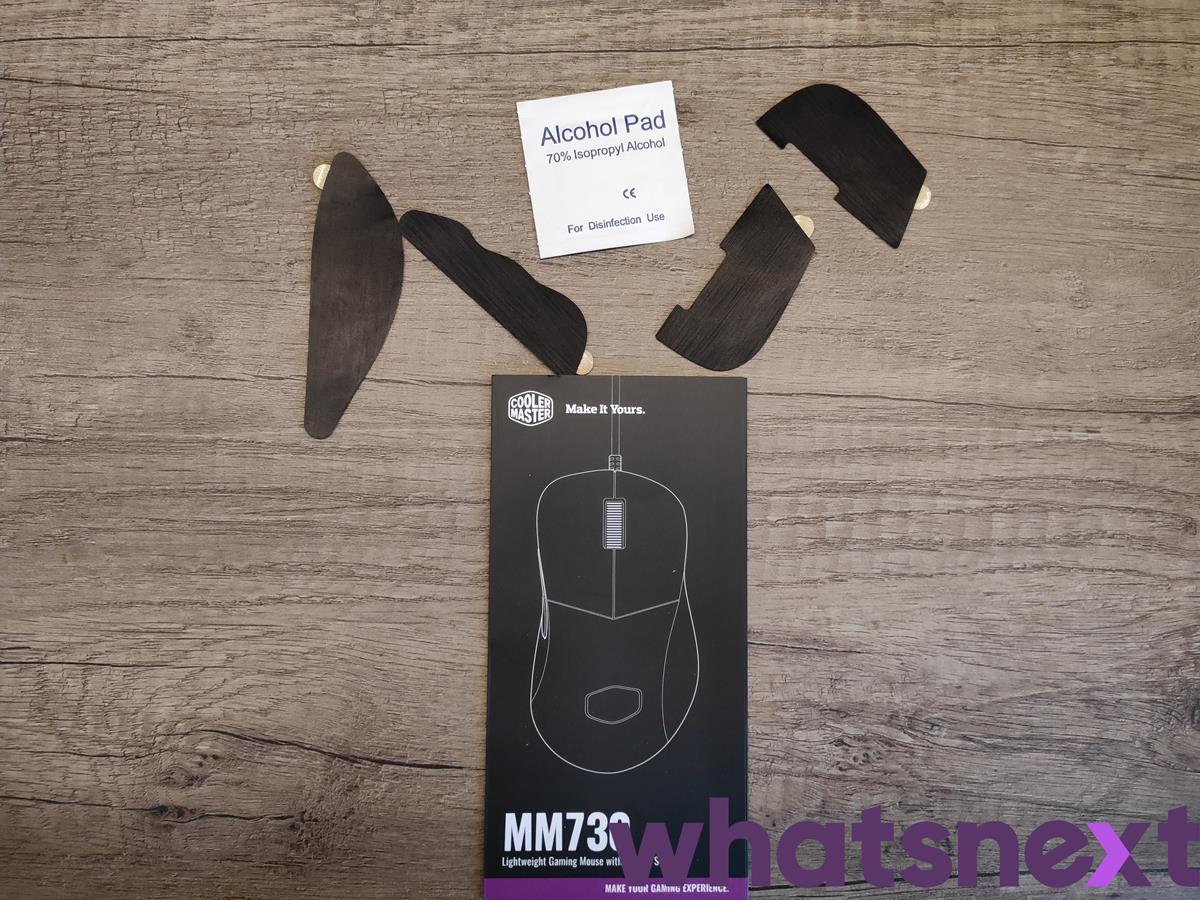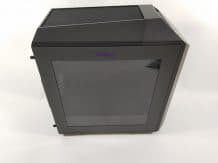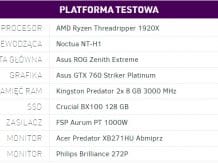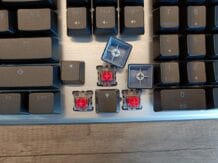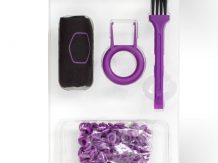Cooler Master has recently expanded its gamer mice offer with the MM73X models. Today we took a closer look at the company’s inconspicuous but most advanced wired mouse – the Cooler Master MM730. Are you ready to get to know what the producer has prepared for us?
Box and accessories included
The MM730 mouse comes to us in a small cardboard box, which contains a cardboard cover, which together with a piece of foil is responsible for the safety of the product during transport. In addition to the mouse itself and the cable integrated with it, we also get a product card, a wipe soaked in alcohol and four rubber, good-quality covers for optional sticking to the housing.
The most important features
- PAW3389 optical sensor
- Sensitivity on 7 levels from 100 to 16,000 DPI (increments of 100 units)
- Weight without cord: 48 grams
- Dimensions: 122 x 69 x 39 mm
- Material: matte plastic
- Main switches: 70 million click optical
- Number of buttons: 6 buttons
- Interface: USB via 1.8m Ultraweave USB-C to USB-A cable
- USB refresh: 125, 250, 500 and 1000Hz
- Backlight: yes, RGB
- Dedicated MasterPlus + software
- Warranty: 2 years
Design, materials and workmanship
The Cooler Master with the MM730 followed the beaten path, opting for a standard shape, both in terms of cut and size. Tailored specifically for right-handed users who like asymmetrical shapes, the MM730 uses a well-thought-out design of each of the panels used. These are made of a hard, matte plastic dyed perfectly black or white (depending on the version) color, which, contrary to appearances (low weight of 48 grams), does not bend under pressure, and in addition does not creak or scratch. At least from the top, because on the base we can see the reason for such a low weight – it is a perforated plastic panel under the sticker. This one is already bending to an unpleasant degree.
The left panel has a significant indentation to better accommodate the user’s thumb, while the right panel has an extended back section providing better support for the little and ring finger. The back, on the other hand, is quite standard and quickly rises to a maximum height of 39.1 mm to provide palm support. The last manifestation of care for comfort comes down to the wings of the main buttons, and when it comes to design, this only complements the illuminated shape of the Cooler Master logo on the spine. This is hidden not under a milky insert, but a smoky one, so only activating the backlight reveals its presence.
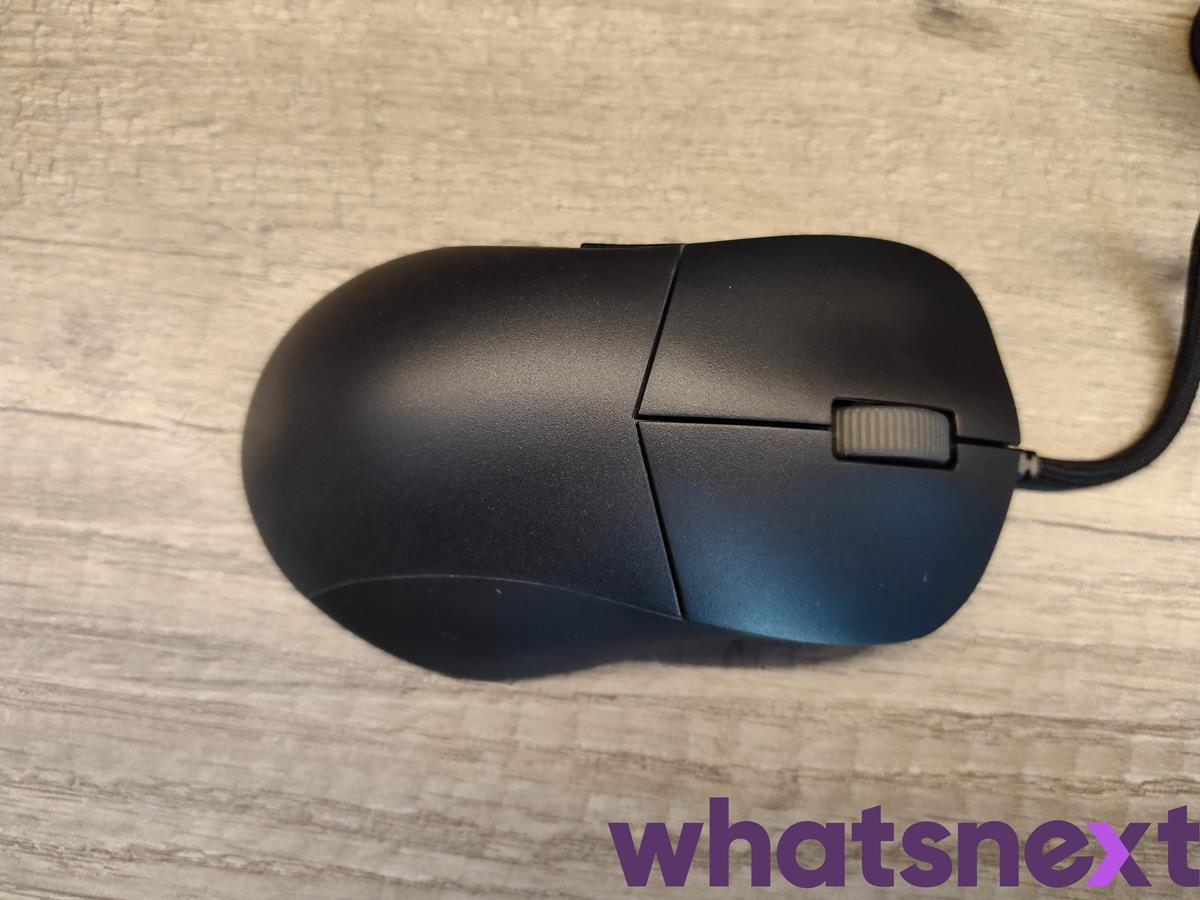
In all other respects, the MM730 is standard. It has an integrated Ultraweave cable in a high-quality material braid, which will be appreciated by everyone who has struggled with a too stiff, heavy mouse cable at least once. There was also a roller with a rubber cover, two side buttons made of slippery plastic, and sliders on the bottom. They are accompanied by one simple button to change DPI, the function of which can be changed, and a sensor located not in the center, but a good centimeter outside the center of the mouse base.
Also read: NZXT Kraken X73 RGB White cooling test
It must be admitted, however, that the four white inserts you see above are not just anything. These high-quality Teflon sliders with rounded edges support a very low weight in terms of ensuring smooth and free movement on the mousepad. The MM730 itself is a great mouse for dynamic games, which is emphasized primarily by the low weight and forcing us to grasp the fingertip with massive hands, claw with even larger and smaller palms. With the first two, you get the most confidence in movement, and with the last one – comfort, because your whole hand will rest on the mouse.
Cooler Master praises the main buttons of the MM730, and it is not surprising, because he created them from scratch, focusing on activation not through metallic contacts, but interrupting the light beam constantly generated in the switches. This allows the switch to focus only on providing the ideal course of action, as the beam interrupts itself by simply acting.
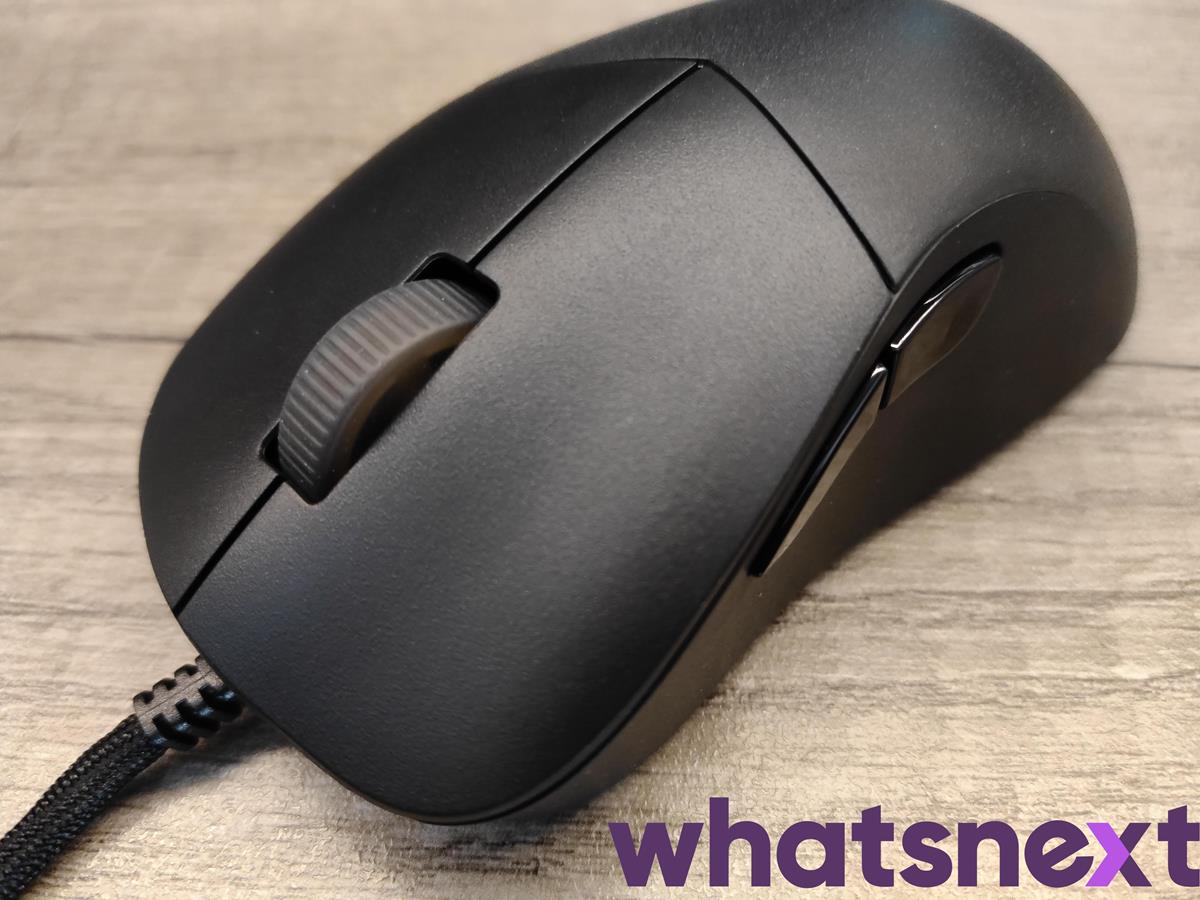
In practice, this approach clearly increases the force with which the button returns to its original place, which directly translates into satisfactory responsiveness. Especially that in the MM730 the buttons work more “sharply” in terms of sound and hardness than those in the MM731 (the more expensive wireless model), although they are said to be based on the same switches. What is the reason for this? Unfortunately, I have no idea, but the MM730 is clearly better to “click”.
With all this, the MM730 skate is not as great as in the MM730. Its action is average, which is manifested not so much by unpleasant scrolling, because it comes down to perfectly perceptible, light jumps from tooth to tooth, and the sound that this roll makes with more aggressive movements. It is a pity, because Cooler Master boasted in the case of the MM730 that it used an optical encoder, supposedly improving the reading process.
Software and backlight
Not much can be said about the backlight system. Maybe except that it might as well not be there, because the illuminated shape of the manufacturer’s logo on the spine has no function other than helping to find the mouse after dark. The roller makes up for it a bit, because it combines the color of the backlight with a specific DPI level.
Although the manufacturer took care of the possibility of adjusting the color and choosing one of several effects, the way the roller is illuminated by the ugly shadows on the edges cries out to heaven for vengeance. It is difficult to capture it in pictures, so you only need a description. However, the manufacturer should be commended for an interestingly illuminated spine, because after deactivating the backlight, the inset after it disappears completely.
MasterPlus + downloadable software supporting MM730 is a HUB for most of the new Cooler Master devices. While offering traditional functions, as is usually the case with mouse applications, it catches the eye with the Mouse-Combo option to increase the number of button functions by combining with a pressed wheel, the function of calibrating the mouse for a given pad, setting the LOD parameter and prediction, as well as creating advanced macros .
Also read: Asus ROG Strix X570-E Gaming WiFi II motherboard test
It is also difficult to complain about the number and type of all functions that can be assigned to the buttons, or a total of five profiles with the option of connecting to specific applications / games. In other words, software is fine.
Test sensora PAW3389
When Cooler Master announced the MM730 and MM731 mice, it indicated the presence of the PixArt PAW3389 optical sensor in them. At the time of the debut of these models on the market, there was no information about the type of sensor, and so we only read about the “optical sensor” on the official website and on the box. However, I tested both of these models and when it comes to their precision, they make the same great impression in subjective opinion. In other words – probably the Cooler Master used the PAW3389 in the first revision and thanks to this it will receive positive reviews in terms of the precision of both models, but will it not degrade them to a lower level over time? [Aktualizacja, na obecność PAW3389 wskazuje oficjalna broszura produktu, więc co do niego możecie być pewni].
I can’t predict this, and there are chances of it, because officially you should only expect DPI to be 16,000 units, tracking is 400 inches per second, LOD below 2mm, and acceleration is 50g. Interestingly, the differences between the MM730 and MM731 can only be seen in terms of the cheated and yes, because digitally high DPI (16000 vs 19000), which clearly suggests the use of the same sensor.

In our tests, the MM730 did a great job in this most important plot. It offers imperceptible smoothing at DPI levels that are not tormented by other negative phenomena, as well as the feeling itself, responsiveness and no problems such as negative or positive acceleration. The LOD level is ~ 1.2 mm in the low mode, and when it comes to interpolation and high-frequency noise, in both cases you can notice these phenomena only after exceeding 6000 DPI. However, not because the sensor used is so great, but because the drops in precision make up for the algorithms, artificially smoothing our movement. Everyone can feel it already at 3000 DPI.
Cooler Master MM730 test – summary
I would like to say that the MM730 Cooler Master can be considered a unique mouse, but it would be far from the truth, because after the end of this test I will quickly forget about it. It lacks something that would be remembered for a long time, but it is not necessarily a big problem. As for the model at the price of PLN 365, which will probably drop to PLN 299 over time, the MM730 is definitely worth recommending.
Also read: Test SteelSeries Prime Mini, the slimmed Prime model
The most important features? Good workmanship, minimalist design approach, low weight, nice shape for dynamic games, great quality sliders and main buttons, a light cable that you can forget while playing, and finally what is most important – the PAW3389 optical sensor, which is one of the best on the market .




